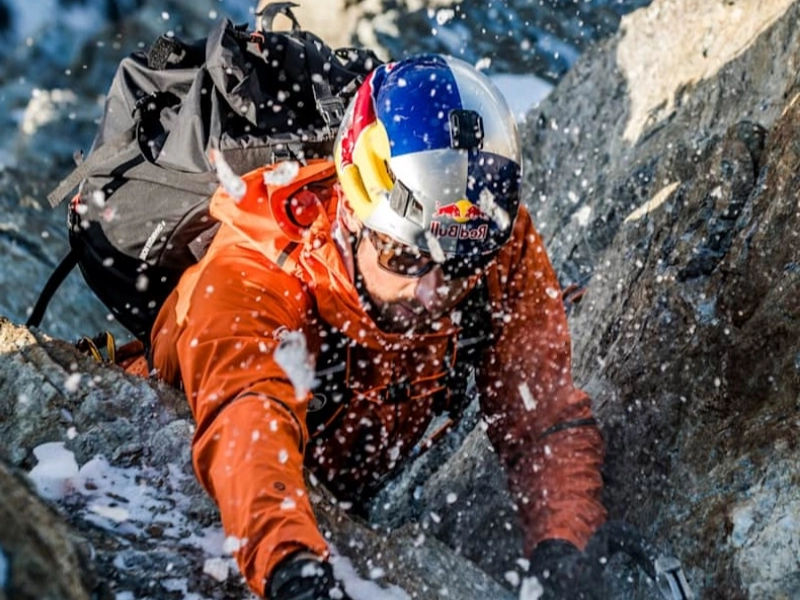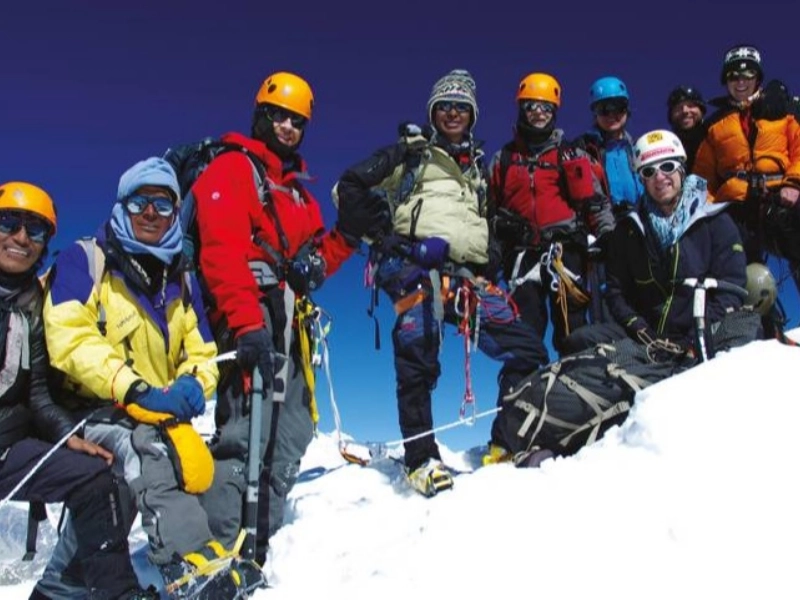Exercises that target the core and are explosive are mountain climbers. They can also increase hip strength and mobility when done correctly. Assume a high plank position, putting your shoulders over your wrists and using your core. For ten "climbs," drive your right knee to your chest and quickly switch legs. A quicker pace can transform mountain climbers into HIIT workouts that increase heart rate and burn calories.
 Over time, mountain climbing is an excellent method to build strength. They are an excellent addition to any exercise regimen because they can be done anywhere and at any level of effort. Depending on your objectives, you can also do them with or without weights to increase the difficulty of the workout.
Mountain climbers not only work your core muscles but also your balance and coordination. Being able to maintain your body's balance and stability while moving can help you perform better when running and in other sports.
Start in a high plank position with your shoulders above your wrists and your pelvis tucked under to perform mountain climbers. Next, push your right knee and then your left knee toward your chest. This process of switching legs should be continued until you've finished one full rep. For optimal effects, repeat as many times as you can in brief spurts.
Over time, mountain climbing is an excellent method to build strength. They are an excellent addition to any exercise regimen because they can be done anywhere and at any level of effort. Depending on your objectives, you can also do them with or without weights to increase the difficulty of the workout.
Mountain climbers not only work your core muscles but also your balance and coordination. Being able to maintain your body's balance and stability while moving can help you perform better when running and in other sports.
Start in a high plank position with your shoulders above your wrists and your pelvis tucked under to perform mountain climbers. Next, push your right knee and then your left knee toward your chest. This process of switching legs should be continued until you've finished one full rep. For optimal effects, repeat as many times as you can in brief spurts.
 A strenuous workout that burns a lot of calories is mountain climbing. They can also help you tone your abdomen and gain muscle mass. But if you want to see results, you have to do them correctly and stick to your training schedule.
One common error is to drive your legs toward your chest, swaying and bouncing. This lessens the exercise's effectiveness by preventing the activation of your core muscles. Too much speed is another mistake. This can make you lose control of your form, in addition to raising your chance of damage.
Start in a high plank position with your shoulders over your wrists and your pelvis tucked to prevent making these mistakes. Next, push your right knee and then your left knee toward your chest. Continue in this manner for a minute or however many repetitions you want to do. Try raising your knees on a step or bench if you notice that they are too low to the floor.
A strenuous workout that burns a lot of calories is mountain climbing. They can also help you tone your abdomen and gain muscle mass. But if you want to see results, you have to do them correctly and stick to your training schedule.
One common error is to drive your legs toward your chest, swaying and bouncing. This lessens the exercise's effectiveness by preventing the activation of your core muscles. Too much speed is another mistake. This can make you lose control of your form, in addition to raising your chance of damage.
Start in a high plank position with your shoulders over your wrists and your pelvis tucked to prevent making these mistakes. Next, push your right knee and then your left knee toward your chest. Continue in this manner for a minute or however many repetitions you want to do. Try raising your knees on a step or bench if you notice that they are too low to the floor.
 Because they are a wonderful way to tone your upper body and burn fat, mountain climbers are an excellent exercise to incorporate into your everyday regimen. They also provide you with a decent dose of cardiac exercise and aid in strengthening your core. In conjunction with a nutritious diet, mountain climbers can assist you in achieving your weight-loss objectives.
Start in a high plank position with your hands directly below your shoulders and your core engaged to perform a mountain climber. Raise your right knee gradually toward your chest, followed by your left knee. Quickly repeat the sequence for a minute, or for however many repetitions you like.
Try creating an incline plank by placing your hands on a bench or step if you find conventional mountain climbing too difficult or just want to mix things up a bit. This tweak can make the exercise a little more difficult while also relieving some of the strain on your shoulders and wrists.
Because they are a wonderful way to tone your upper body and burn fat, mountain climbers are an excellent exercise to incorporate into your everyday regimen. They also provide you with a decent dose of cardiac exercise and aid in strengthening your core. In conjunction with a nutritious diet, mountain climbers can assist you in achieving your weight-loss objectives.
Start in a high plank position with your hands directly below your shoulders and your core engaged to perform a mountain climber. Raise your right knee gradually toward your chest, followed by your left knee. Quickly repeat the sequence for a minute, or for however many repetitions you like.
Try creating an incline plank by placing your hands on a bench or step if you find conventional mountain climbing too difficult or just want to mix things up a bit. This tweak can make the exercise a little more difficult while also relieving some of the strain on your shoulders and wrists.
 To stay on the wall and reach the next handhold or foothold, climbers must be able to focus. Frequent climbing—at the crag or in a gym—helps refine these problem-solving abilities. It also aids in the development of emotional regulation skills. Climbers who experience fear learn to refocus and take charge of the situation instead of allowing it to overtake them.
Another excellent way to unwind and forget about the strains of daily life is to go climbing. Reaching the summit of a mountain is a feat that very few people ever do and may be quite satisfying. Large mountains can also be quite humbling, which helps foster healthier relationships and an attitude of gratitude. But if a climber overextends themselves, severe exhaustion can develop quickly and impair their performance. At high elevations, this is especially true.
To stay on the wall and reach the next handhold or foothold, climbers must be able to focus. Frequent climbing—at the crag or in a gym—helps refine these problem-solving abilities. It also aids in the development of emotional regulation skills. Climbers who experience fear learn to refocus and take charge of the situation instead of allowing it to overtake them.
Another excellent way to unwind and forget about the strains of daily life is to go climbing. Reaching the summit of a mountain is a feat that very few people ever do and may be quite satisfying. Large mountains can also be quite humbling, which helps foster healthier relationships and an attitude of gratitude. But if a climber overextends themselves, severe exhaustion can develop quickly and impair their performance. At high elevations, this is especially true.